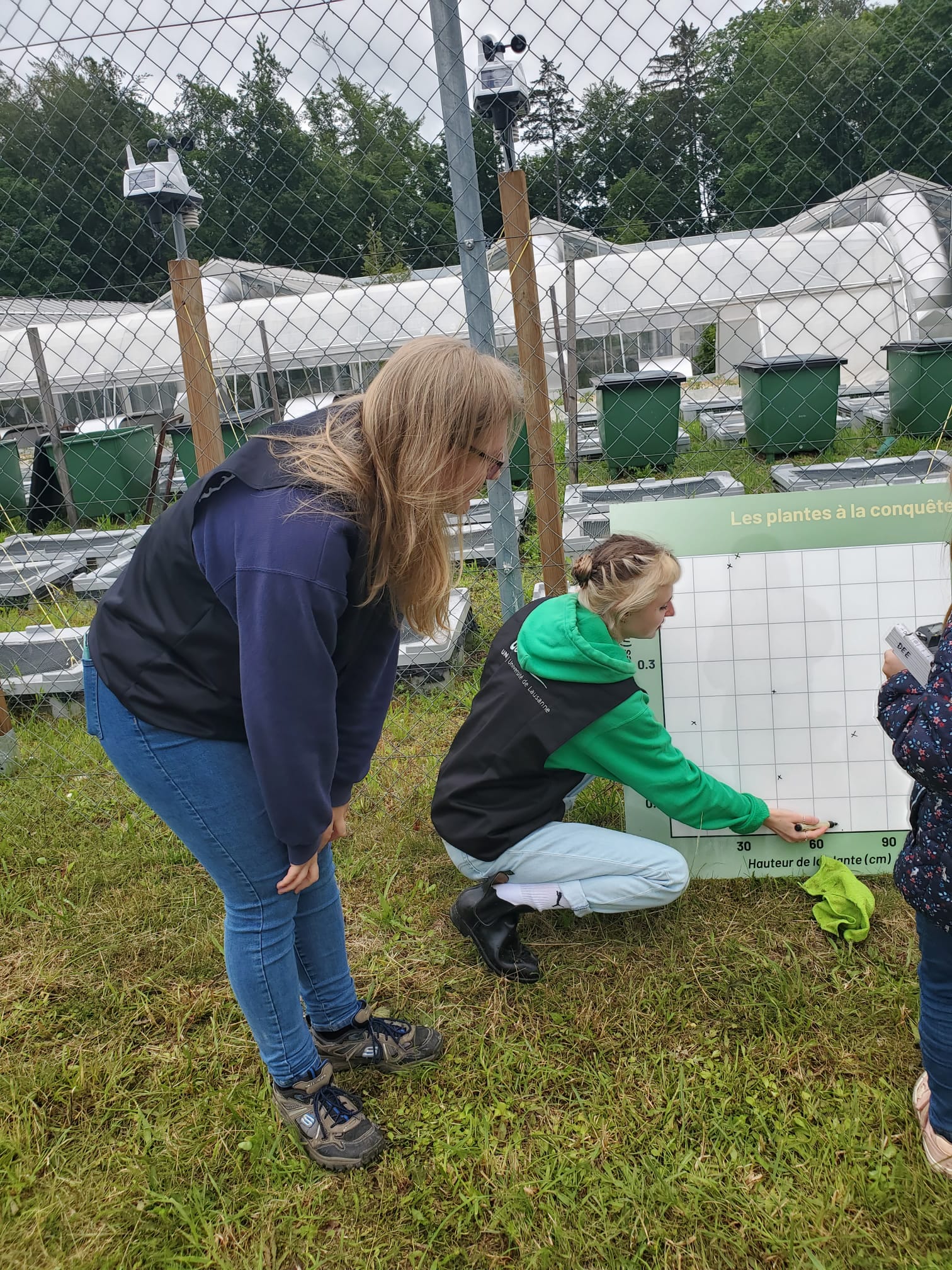Les Mystères de l'Unil
By Ehouarn Le Faou on June 3, 2024
At a recent science outreach event, we organized a workshop on plant biology for children aged 8 to 12. The main objectives were to help the children understand basic plant biology concepts, particularly pollen dispersal and environmental factors affecting plant strategies, and to appreciate how plant diversity builds-up. The workshop was divided into two activities.
First activity: Pollination modes
This first activity looked at the different types of pollination, in particular wind pollination and pollination by animals. The aim was to understand what pollination is, why it is important and how to recognise how flowers specialise in one of these two modes.
The activity, set in a greenhouse, was designed to be fun and interactive. It began with an engaging introduction where we briefly talked about the importance of pollen dispersal for plant reproduction. Using simple terms and interactive questioning, we explained wind pollination and animal pollination, highlighting how different plant structures affect pollen dispersal efficiency.
Next, we divided the children into groups and showed them printed flowers. We asked the children to classify the flowers into two groups: those pollinated by the wind and those pollinated by animals. This activity helped them see the practical differences between the two types of pollination. We discussed examples where determining the type of pollination wasn’t straightforward and presented real plants to show the differences between wildflowers pollinated by wind and those by animals.
For wind pollination, we described the characteristics of plants pollinated by the wind, such as simpler flowers with no strong odors, and provided examples like grasses and many trees. These flowers produce visible pollen ready to be carried by the wind. For animal pollination, we explained how colorful flowers and pleasant odors attract animals, discussing the roles of bees, butterflies, birds, and even bats in the pollination process, engaging all senses: smell, sight, and taste.

In the concluding part, we reviewed the correct answers, explaining why each plant is suited to a particular pollination method. We highlighted interesting facts about plant-animal interactions and invited the children to ask questions to clarify their doubts, encouraging them to observe plants in their environment. The session ended with a discussion about the children’s enjoyment of the experience.
Throughout the workshop, we integrated short, interesting stories about pollination, such as the unique relationships between specific flowers and their pollinators (they particularly enjoyed the story of rafflesia!), making the session both educational and entertaining.
Second activity:
This second activity focused on distinguishing traits of plants found in forest understories and open meadows. After leaving the greenhouse to head outside, the session began with a discussion on various plant life strategies, including annuals and perennials, and how plants growing in different environments have different morphologies. The kids eagerly discovered why different plants adopt different survival strategies. We explained that plants in different habitats face unique challenges—like limited light in the understory and intense competition in meadows. To grow, plants develop specific traits, such as growing taller to reach light or having thicker leaves to better capture and conserve resources.
Next, the children became young botanists, measuring two key traits of herbaceous species in both the understory and meadows: plant height and leaf thickness. Equipped with folding rulers and digital micrometers, they collected data and plotted their findings on a graph, comparing plant traits visually across different species. With data in hand, we explained the biological significance of these traits. Plant height is crucial for light acquisition and competitive success, especially in light-rich environments like meadows. Conversely, leaf thickness is vital for light interception and water conservation, particularly in sunnier, drier habitats.


We discussed the results, highlighting differences between fast-growing species in meadows and slow-growing species in the understory. Fast-growing plants often dominate productive, undisturbed areas, while slow-growing plants thrive in limiting, disturbed environments. We also introduced the concept of “noise” or “outliers” in our data, helping kids understand that variations within habitats or species can signal niche differentiation to avoid competition.
Forest understories are characterized by lower light availability, greater soil humidity, richer nutrients, and lower herbaceous species diversity and density. In contrast, open meadows feature higher light availability, drier soil, poorer nutrients, higher species diversity and density, and intense competition for resources. Plant height is linked to light acquisition, competitive vigor, and reproductive success, while leaf thickness is crucial for light interception, carbon fixation, physical strength, and protection against environmental stresses.
The workshop was a rewarding experience for the children, allowing them to discover the remarkable adaptability of plants in diverse environments. By measuring and analyzing plant traits, the kids gained a hands-on understanding of plant diversity and ecological strategies.